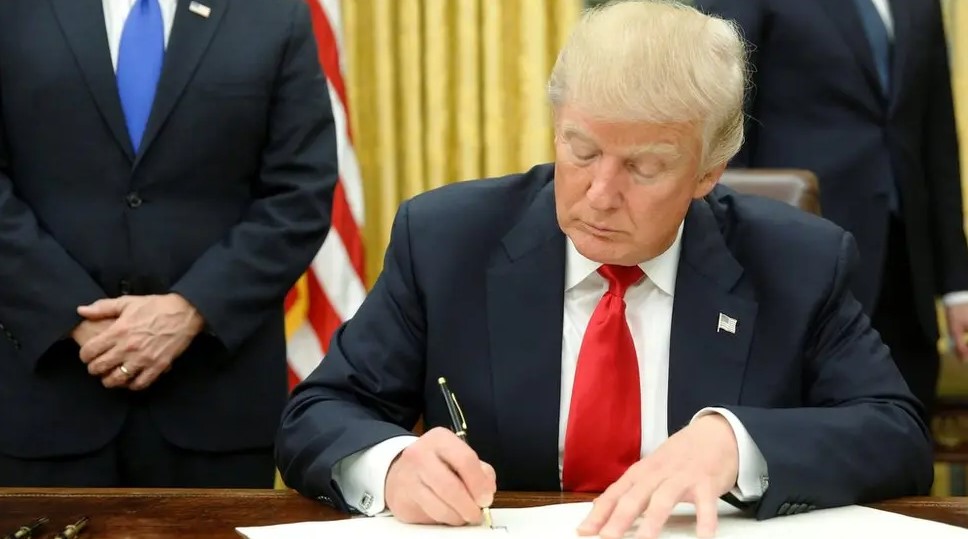In a historic move fulfilling a longstanding conservative objective, President Donald Trump is set to sign the Trump Executive order to abolish Department of Education, thereby returning educational authority to states and local communities.
Restoring Local Control Over Education
For decades, conservatives have championed the dissolution of the Department of Education, established in 1980, arguing that education policy should be determined at the state and local levels, free from federal overreach. This perspective holds that local communities and parents are best positioned to understand and meet the unique educational needs of their children, without interference from unelected bureaucrats in Washington, D.C.
Federal Overreach and Educational Decline
The Department of Education’s establishment marked a significant shift toward federal involvement in education. However, despite substantial funding—approximately $268 billion in the 2024 fiscal year—the anticipated improvements in educational outcomes have not materialized. National Assessment of Educational Progress (NAEP) scores have remained stagnant or declined, particularly in critical areas such as mathematics and reading.
Critics argue that federal oversight has led to a one-size-fits-all approach, stifling innovation and failing to account for regional differences. The imposition of nationwide standards and curricula has often been viewed as an infringement on states’ rights and local autonomy, leading to growing frustration among parents and educators alike.

America’s Declining Education Standards Since the Creation of the Department of Education
Since the Department of Education was established in 1980, America’s global education ranking has plummeted. Once a world leader in academics, the U.S. now ranks around 40th in math and science according to the Programme for International Student Assessment (PISA). Despite spending more per student than almost any other developed nation, American students continue to fall behind.
Before the federal government took over education, American schools were among the best in the world, producing top-tier engineers, scientists, and entrepreneurs. But as federal bureaucrats imposed rigid, one-size-fits-all policies, local control eroded, and test scores stagnated. The more Washington, D.C., got involved, the worse things got.
How is it possible that the U.S. spends nearly $268 billion on education and gets worse results than countries spending half as much? The Department of Education has been a colossal failure, and the Trump Executive order to abolish Department of Education is a necessary step toward restoring American educational excellence.
Empowering Parents and Teachers
By abolishing the Department of Education, President Trump aims to empower parents and teachers, giving them greater control over educational content and standards. This move is expected to foster a more responsive and adaptable educational system, tailored to the specific needs of local communities. It aligns with the belief that those closest to students—parents and local educators—are best equipped to make decisions that affect their education.
Challenging Progressive Agendas
The federal Department of Education has been criticized for promoting progressive agendas that conflict with traditional values held by many Americans. Initiatives perceived as advancing diversity, equity, and inclusion (DEI) or gender ideology have been contentious, with opponents arguing that such programs amount to ideological indoctrination rather than education.
By dismantling the department, the administration seeks to eliminate these programs, ensuring that education remains focused on core academic subjects and the transmission of foundational knowledge.

Constitutional Considerations
The United States Constitution does not explicitly grant the federal government authority over education, a point often cited by advocates for the department’s abolition. They contend that, under the Tenth Amendment, powers not delegated to the federal government are reserved to the states or the people. Therefore, returning control of education to the states is seen as a restoration of constitutional principles and a correction of federal overreach.
Economic Efficiency and Reduction of Bureaucracy
Eliminating the Department of Education is also viewed as a fiscally responsible measure. The department’s budget has grown exponentially since its inception, yet critics argue that this increased spending has not led to commensurate improvements in educational outcomes.
By cutting unnecessary bureaucracy, resources can be more effectively allocated directly to classrooms, teachers, and students, reducing waste and improving efficiency.
Anticipated Challenges and Opposition
While the executive order signifies a decisive step toward dismantling the Department of Education, it is anticipated that there will be significant opposition from various quarters. Teachers’ unions, progressive advocacy groups, and some state officials are likely to challenge the move, both politically and legally. They argue that federal oversight is necessary to ensure equal educational opportunities and to protect the rights of marginalized students.
The Path Forward
Despite potential challenges, the Trump Executive order to abolish Department of Education represents a fulfillment of President Trump’s campaign promise to reduce federal intervention in education and to champion states’ rights. It reflects a broader conservative vision of limited government and individual liberty. President Trump has been downsizing the government since he took office. If you didn’t know, Trump plans to sell Nancy Pelosi’s Federal Building in California.
As the process unfolds, it will be essential for state and local governments to prepare to assume greater responsibility for education, ensuring that the transition enhances educational outcomes and respects the diverse values of communities across the nation.
Conclusion
President Trump’s executive order to abolish the Department of Education marks a pivotal moment in American educational policy. By restoring control to states and local communities, this move aims to create a more responsive, efficient, and effective educational system that aligns with the foundational principles of federalism and respects the rights of parents and local educators.
It is a bold step toward reclaiming education from federal overreach, and the Trump Executive order to abolish Department of Education will ensure that America’s schools prioritize education over bureaucracy.






